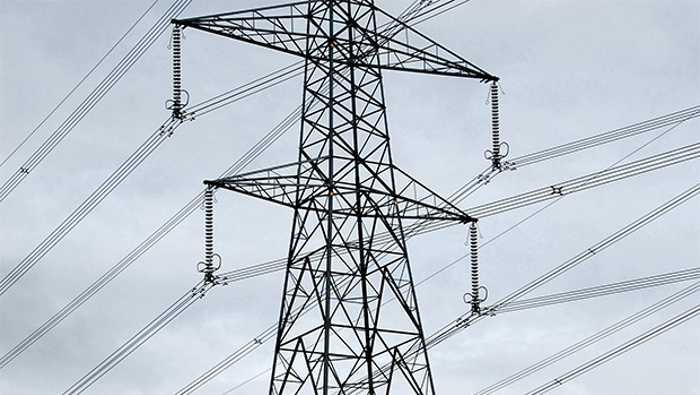We're talking energy today, or rather the lack of it. New Zealand seems to have sleepwalked into an energy crisis, according to the Chairman of Open Country Dairy, the second biggest player in New Zealand's dairy export industry. Laurie Margrain said in a story the crisis is not coming, it's here. He said an example of its arrival is that the factory has had to incorporate standby coal-fired boilers into its brand-new Southland alternative-powered cheese factory, because of the certain risk of insufficient electricity generation.
Another story out within the same 24 hours, the largest employer in the Ruapehu district has paused operations at its pulp mill and sawmill sites after a nearly 600% increase in energy costs since 2021. Wholesale prices have risen from $100 per megawatt hour (MWh) to an average of around $700 per MWh this week. The Chief Executive at Winstone Pulp International said the company has to think about its future now that energy costs have risen from 15% of total production to an excess of 40%. You cannot plan for that. They've done everything they can. They say they can't pass on the increases to customers because they sell into a commodity market where the price is the price.
So this is affecting New Zealand. The overseas buyers don't give a fat rat's bum that we're being held over a barrel by the electricity generators and the retailers, the Gentailers. They don't care, they just want to look at the price. And so if they can't compete because energy costs have risen through the roof, what is their future? As a business, Mike Ryan says we've invested tens of millions into CapEx to improve production and energy efficiency. So they've reduced their energy use by 20 to 30% for every ton produced, they have done everything they can do and yet their future is uncertain.
Minister for Regional Development and Associate Minister for Energy Shane Jones told Heather du Plessis-Allan last night that if prices of electricity are inordinately high, then there needs to be more electricity generated.
“The difficulty is if we have a continually rising cost of electricity, then the only way to deal with that problem is to rapidly expand supply. And that's why the fast track legislation, I've no doubt in my mind, will prove to be incredibly useful so we can accelerate the development of wind farms, solar farms, hopefully some more hydro. And you know we have an inordinately rich resource in New Zealand, which is the geothermal energy, and geothermal energy drilling in other countries goes down 5 or 6 kilometres into the earth and you tap into what's called hot rock, not quite at the magma and that is a profound geothermal resource, but it will probably require the crown and the science institute owned by the Crown to do the exploratory work.”
But for how long? I love the way he just casually says yes, hopefully another hydro dam. Hopefully another hydro dam?! How long would that take? How long would it take to get through even with the fast-track legislation? How long would it take to get through the red tape before there was a spade in the ground? We, along with just about every other nation, signed up to the Paris Accord to reduce emissions or face fines and sanctions, and that's fine. Let's look at alternative ways of doing things, better ways of doing things. But we can't just move away from traditional energy sources until we have another form of renewable, socially acceptable energy that is reliable.
So the power companies say they're investing in alternatives and renewables, every single cent they have is being put back into investing in alternative sources of power. And that's one of the reasons why power is so expensive. But in the meantime, what are manufacturers to do while they wait for Shane Jones hydro dam to be built? I wonder if I'd even be alive to see it? While we wait for offshore wind farms to arrive and start spinning, I mean this is pie in the sky. You can want something, you can wish for something, you can hope for something, you can even plan for something, but if it’s not here, how do the manufacturers switch on the lights and turn on the machines? The manufacturing sector has maintained a contribution to GDP of about 11% since 2013.
Do you know how New Zealand makes money? And no, it doesn't print it. No, no, we've seen that that doesn't work. It sells stuff and people buy it, and that gives us an income. So for those of us who work, we sell our services, we sell our goods, we get money, and we can pay the mortgage, and we can buy nice things if there's money left over. And that's how a country works. We sell stuff. The world buys it. We pay our bills and if we've got enough leftover, we can all pay police more and build new hospitals and do all those lovely things that civilized countries do.
So if the manufacturing sector isn't guaranteed a supply of energy, it's going to lose production, it's going to lose customers, and we're going to lose money. We're also going to lose jobs. $9.4 billion worth of exports and the sector employs nearly 1/4 of a million people. It's a big deal. And Shane Jones talked about sweetheart deals, and yes, the power companies could play nice and give the big manufacturers a deal as well. Why would they? They have people to answer to as well. All of these companies are responsible to their shareholders. They can't be doing sweetheart deals and investing in new power new sources of supply. It's a bloody mess. Shane Jones saying hydrothermal, how long is it going to take? The lovely people at the pulp mill need to turn the lights on now and they can't, it is simply unsustainable given the increase in price, so where do we go from here?
Take your Radio, Podcasts and Music with you










